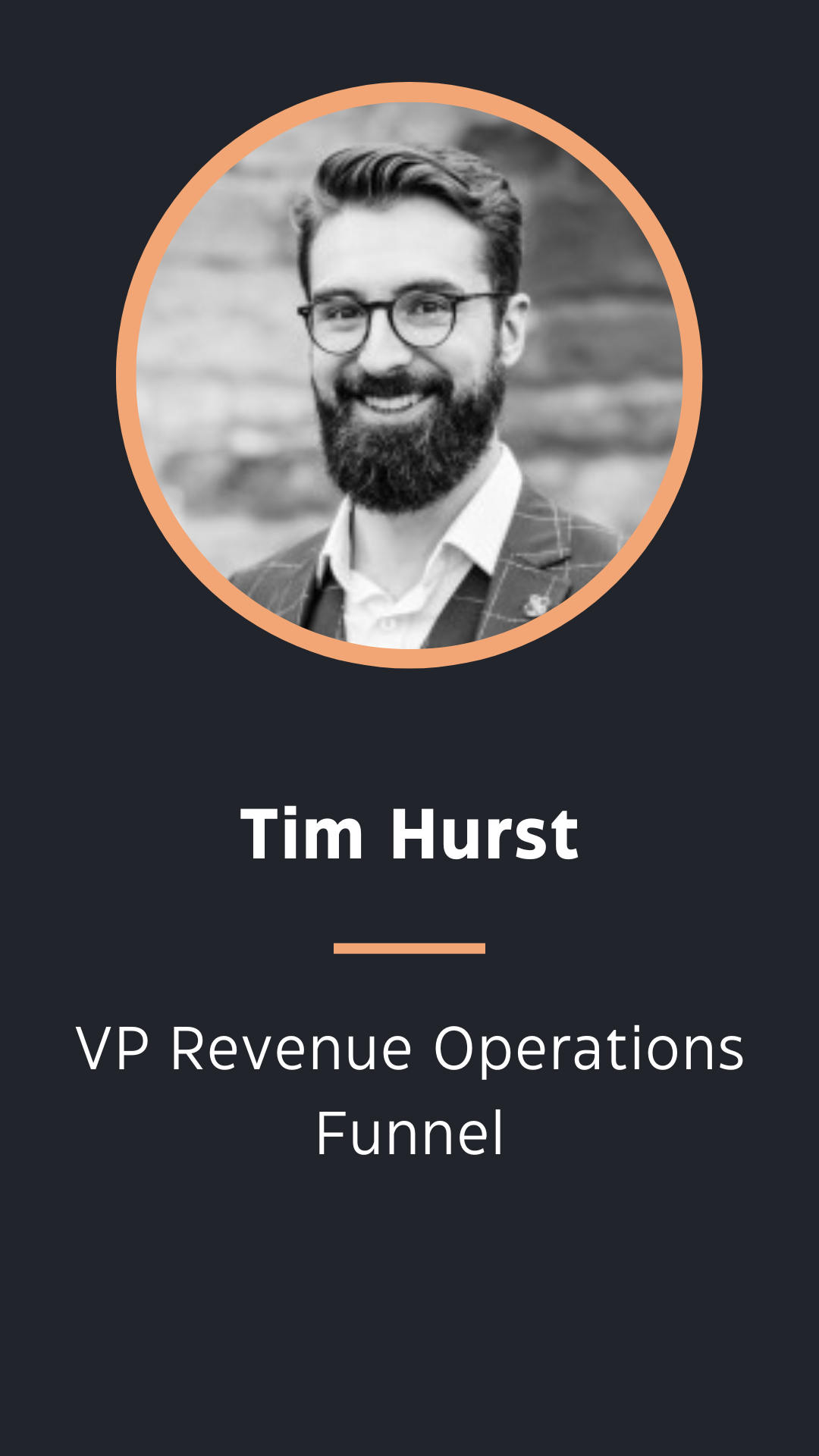Sales Enablement Tools: The potentials and pitfalls

Fidelity International Strategic Ventures (FISV) regularly hosts webinars and workshops for our portfolio companies. These events provide an opportunity to share insights and learnings on topics that can benefit companies on their scaling journey. Our latest webinar explored the world of Sales Enablement tools, exploring the potential these tools have in optimising sales success as well as the careful planning and considerations organisations need to take into account before implementing these tools.
Over the past decade, systems like the CRM and data analytics have become essential components of daily operations for sales and marketing teams, and the heightened role of data and technology within the sales process has led to a host of new tools and platforms entering the market. In recent years, the term "sales enablement" has gained prominence, with many B2B companies implementing a dedicated sales enablement function within their organisations. While there is ongoing debate about how exactly Sales Enablement is defined and what its scope entails, at a basic level Sales, Enablement is about equipping organisations with the necessary tools, information, and resources to enhance the end-to-end sales process.
Our webinar explored various aspects of sales enablement, with a specific focus on buyer intent tools. These tools aim to target leads and individuals with purchasing power within organisations, ultimately driving higher conversions. Our panel of industry experts included Mei Li Powell from Metaco, Tim Hurst from Funnel, and Emma Pecenicic from Fidelity International, who shared their valuable experiences and insights.
Throughout the discussion, the panel covered topics such as the transformation from traditional marketing practices to data-driven approaches, strategic vendor assessment, the role of AI in sales enablement, and the decision matrix of building versus buying tools. The webinar not only provided technical insights but also emphasised the significance of aligning tools with organisational goals and staying ahead in the rapidly evolving digital landscape.
Read on for the key takeaways from the session!
.png)
Evolving sales and marketing functions
The evolution of data-driven marketing:
Mei Li delved into the transformation from traditional marketing practices to today's data-driven approaches, highlighting how in the past, organisations relied on marketing efforts to reach clients without the abundance of data we have at our disposal today. Marketing teams were reliant on anecdotal analytics, attending events, running webinars, and gathering direct feedback to evaluate progress. Sales approaches lacked consistency as there weren’t any technology-based tools to standardise communications and share personalised content at scale. Today, the landscape has transformed significantly, and organisations have access to a wealth of data and insights at their disposal and tools providing solutions from opportunity discovery to conversational intelligence, empowering sales teams to make data-driven decisions and enhance productivity, and sales enablement tools that can significantly enhance lead qualification and targeted market strategies. However, with so much data and tooling available, a new problem arises as to how sales and marketing teams can effectively juggle multiple tools and platforms and how they can identify the solutions that are going to move the needle for their organisation.
Ensuring ongoing value add:
We heard the importance of having tools that evolve in tandem with sales strategies, ensuring their long-term utility and integration. Many vendors pitch marketing and sales leads with exciting software and impressive tools, showcasing what their product can do. However, the reality is that if the tool is not providing new insights or value after six months, sales teams may revert to old habits and lose interest. To truly identify gaps and understand the market, it is important to invest in solutions that align with your goals and provide ongoing value.
Alignment of sales and marketing functions:
The adoption of sales enablement tools should go hand-in-hand with a comprehensive marketing strategy. Prospects that the sales team is approaching will consume content via avenues out of their control, so the sales and marketing teams need to work collaboratively to deliver a consistent message and provide relevant content to prospects. By leveraging these tools, organisations can ensure that prospects receive personalised and targeted information, even when sales representatives are not present, and that’s marketing working really well to be aligned with sales and their targeting increasing the chances of success.
- Mei Li Powell“Make sure that you've got something that's living, evolving, and as important for how you set your targets and achieve your targets, and give your sales team the right motivations to keep using the tool, and not a patchwork quilt of tools.”
.png)
Navigating the market environment and vendor selection
Strategic Vendor Assessment:
Emma shared Fidelity International's methodical approach to evaluating vendors, combining internal data with marketing automation insights. Successful implementation and adoption of sales enablement tools require careful planning. It is crucial to map out the organisation's goals, identify the gaps in the current sales process, and evaluate vendors accordingly. Organisations should consider their specific needs and prioritise features that align with their vision and focus. While vendors may present exciting features, it is essential to assess their long-term value and ensure they address the organisation's specific challenges.
Market dynamics and tool implementation:
When implementing sales enablement tools, it is important to consider the market dynamics and concentration of sales, as well as the market nuances that exist within that geography for the products you are selling. For example, in a highly consolidated market where sales teams already have strong relationships and knowledge, the adoption of new tools may not provide significant value. To effectively implement sales enablement tools, it is crucial to thoroughly understand the market you are targeting, whether it's a fragmented or concentrated market, and whether you are entering as a newcomer or maturing within that market. This deep understanding will help you align your strategies and choose the right tools that will enable your sales teams to succeed.
- Emma Pecenicic“When we ran our proof of concept, we did it in a market that was quite concentrated and where we had sales to cover that market, so we discovered that as sales used the tools they already knew all the opportunities they were looking at and were not learning more through the tool. What we learnt was that the market was just too consolidated for these tools to work effectively”

Maximising adoption and RoI
The decision matrix - to build or to buy:
Tim provided insights into how Funnel navigates the decision between developing in-house solutions versus purchasing external tools, focusing on business impact and return on investment. When deciding whether to buy or build in-house tools, organisations need to consider various factors. It is crucial to assess the overall impact and return on investment. The cost of the tool itself is just one aspect; organisations should also evaluate the time spent implementing the tool, the effort required for integration, and the onboarding process for sales teams. Sometimes, building in-house tools may be the best option, especially when customisation and specific functionalities are required. However, careful consideration should be given to the hidden costs and time investments associated with building and maintaining internal tools.
Ensuring successful tool adoption:
To ensure successful implementation and adoption, organisations must actively track usage and monitor the results. If adoption drops off after the initial excitement, it is crucial to provide ongoing support and address any challenges or roadblocks faced by sales teams. Regular follow-up and guidance are essential to maximising the value derived from sales enablement tools. By continuously assessing the usage and aligning the tool with the organisation's goals, sales teams can fully leverage the capabilities of the technology and drive meaningful results.
- Tim Hurst“Trying to track the adoption, make sure that people are actually using it, and if people aren't using it and you can see people aren't using it, then we need to sit with them; we need to literally sit next to them, guide them through the tool, see where they're getting stuck, and help them out. If we're not getting the value after people are actually using it, then that's a different question.”
The webinar was not only a deep dive into the technicalities of sales enablement but also a vibrant discussion on strategic approaches to adopting new tools and aligning them with organisational goals. It's clear that in our rapidly evolving digital landscape, staying ahead in sales enablement is a mix of choosing the right tools, understanding market dynamics, and leveraging AI effectively.
Thanks once again to our panellists!
Article image generated via Canva AI Image creator


